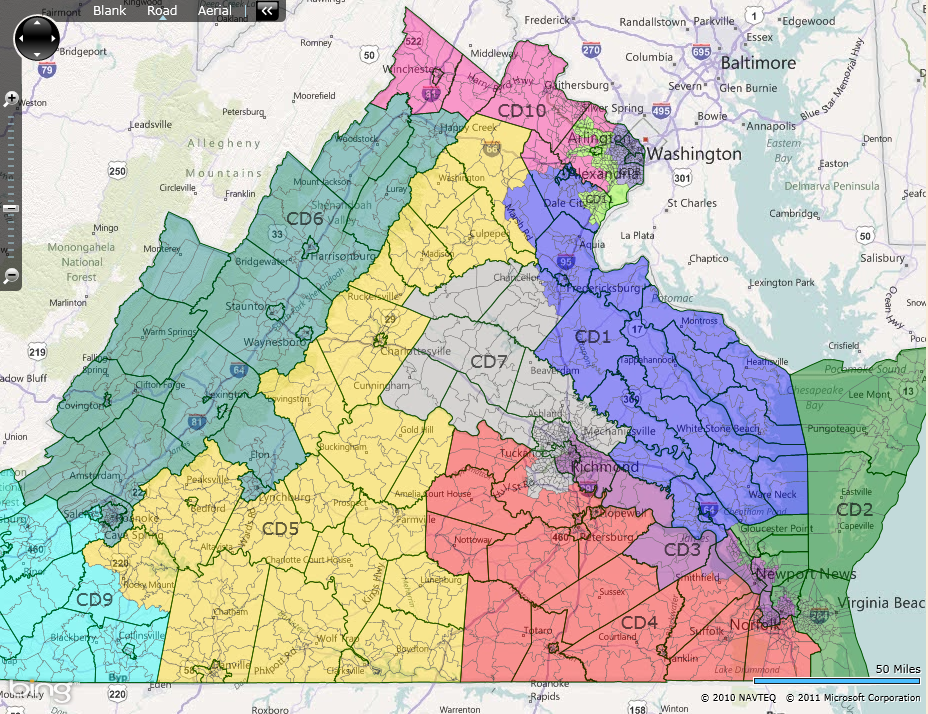The General Assembly is asleep at the switch, and your Republican member of Congress may be in jeopardy. Hoping for a judicial solution on redistricting, the General Assembly is ignoring a federal court order at its own peril.[read_more]
Where did the court order come from?
On October 7, 2014 a three judge panel struck down Virginia’s congressional districts as an unconstitutional racial gerrymander. This was due in part to a shift in Supreme Court case law on the voting rights act. For background on the reasoning see my October 2014 post and read the comments.
There is a maxim in litigation that states “the court speaks through its orders.” In short, this means in many ways it does not matter how much commentary there is on a topic inside or outside the courtroom the only thing that really matters is the actual court order entered by a judge or judges.
I obtained the court order back in October to ascertain the language being applied to the General Assembly which is now reposted here:
In relevant part:
The matter of providing a redistricting plan for the post-2014 elections to remedy the constitutional violations found in this case is referred to the Virginia General Assembly for exercise of its primary jurisdiction. The Virginia General Assembly should exercise this jurisdiction as expeditiously as possible, but no later than April 1, 2015, by adopting a new redistricting plan.
But if this order is going to be overturned there’s no need to act…
The appeal
Given the unusual manner in which redistricting cases are adjudicated, the appeal from the three judge panel is directly to the Supreme Court of the United States. In this instance, the Republican members of Congress appealed. Even our casual readers know that an appeal to the Supreme Court is usually a long shot.
No attempt was made to obtain a stay of the order in the District Court and the Appellants had great confidence that the Supreme Court would announce they were taking the case in mid-January paving the way for a stay in the Supreme Court.
The Supreme Court has not denied the appeal, but they passed over the appeal in January which casts substantial doubt on the possibility the Supreme Court will take the case. The Appellants have not moved for a stay in the Supreme Court.
After the decision in October new Plaintiffs have filed suit to challenge Virginia House of Delegates districts on similar grounds. Given that the earlier case came down as it did, the House districts are in jeopardy.
General Assembly action?
There is no serious General Assembly action. Republicans have control of the Virginia House and Senate. They could be pushing through new Congressional Districts and new House (and Senate Districts). Yet, all I have ever heard from the Republican members of the General Assembly on this issue is that “we can’t pass anything because McAuliffe will veto it,” and “we are confident in and must win the appeal.” The federal courts will end up redistricting for us if we lose!!!! No serious redistricting has even been proposed.
Not good enough.
When facing a seemingly helpless situation the Republican caucuses should be looking for opportunities
The situation is not helpless. Go back and look at the court order, the directive that guides the action (or inaction) of the General Assembly.
The General Assembly, should exercise this jurisdiction . . . by adopting a new redistricting plan.
There are two ways to interpret this:
Option 1: The General Assembly, and General Assembly alone, has the power under the court order to adopt a new redistricting plan. No action, or inaction by the Governor is needed or warranted. Republicans control both the House and the Senate, they could just “adopt a plan” comply with the order, and that would be the end of it.
OR
Option 2: The General Assembly can only “adopt” a new plan by passing a plan with the Governor’s signature or over the Governor’s veto by April 1, 2015. Under this scenario, even if the plan passed by the General Assembly is nonbinding, the three Judge panel in charge of administration of its court order would likely look on any legislative solution favorably in comparison to having a third party completely redraw Virginia’s districts.
Keep in mind that if option two applies it gives McAuliffe incredible power. If Gov. McAuliffe vetoes a plan, then nothing could be passed by April 1, 2015 anyway as the reconvened session to deal with vetoes does not begin until April 15, 2015. This suggests that option two is the less likely interpretation of the court order.
The fundamental question
Under which option does it make sense to not pass any redistricting plan from each house of the General Assembly by April 1, 2015?
The Republican Caucuses are asleep at the switch, and are potentially burying our Congressional Republicans through inaction.
The alternative theory
When given the choice between incompetence and nefariousness I generally presume incompetence. It has been suggested to me that the cause of inaction may actually be nefariousness. It may be that there are redistricting plans for Congress and the House already worked out. These plans are known only to members of the leadership and can be used to reward friends and punish enemies, and are awaiting a precipitating event to be made public.
That precipitating event would be a crisis, such as a sudden and clear denial of the appeal, or a motion in the Congressional redistricting case to appoint a “special master” to redraw the districts. The crisis would require immediate action with little scrutiny. The public would be unable to adequately review the new plans and entrenched powers would get their every desire…
To the Republican leaders in the General Assembly:
Start working on and passing a congressional redistricting plan immediately or risk losing members of congress, OR if you have these secret plans in the works let them see the light of day so we can have an honest debate about their worthiness.

